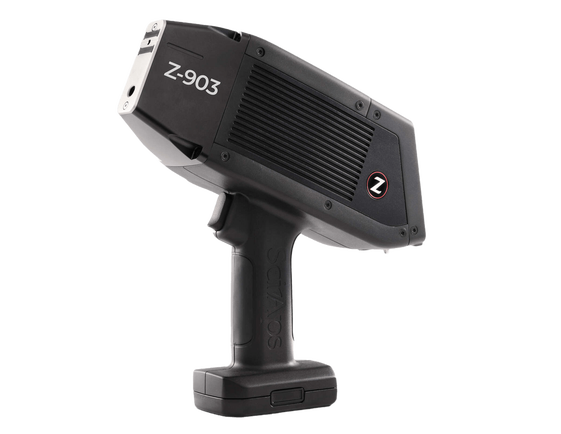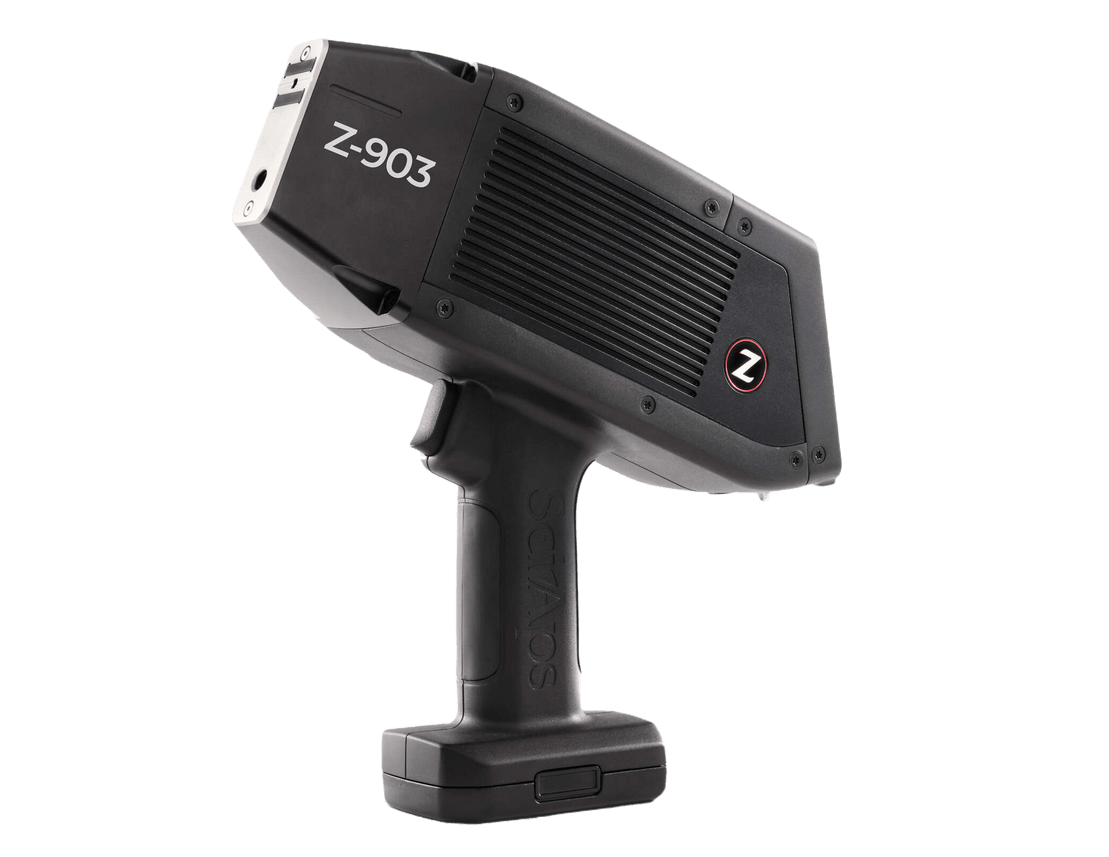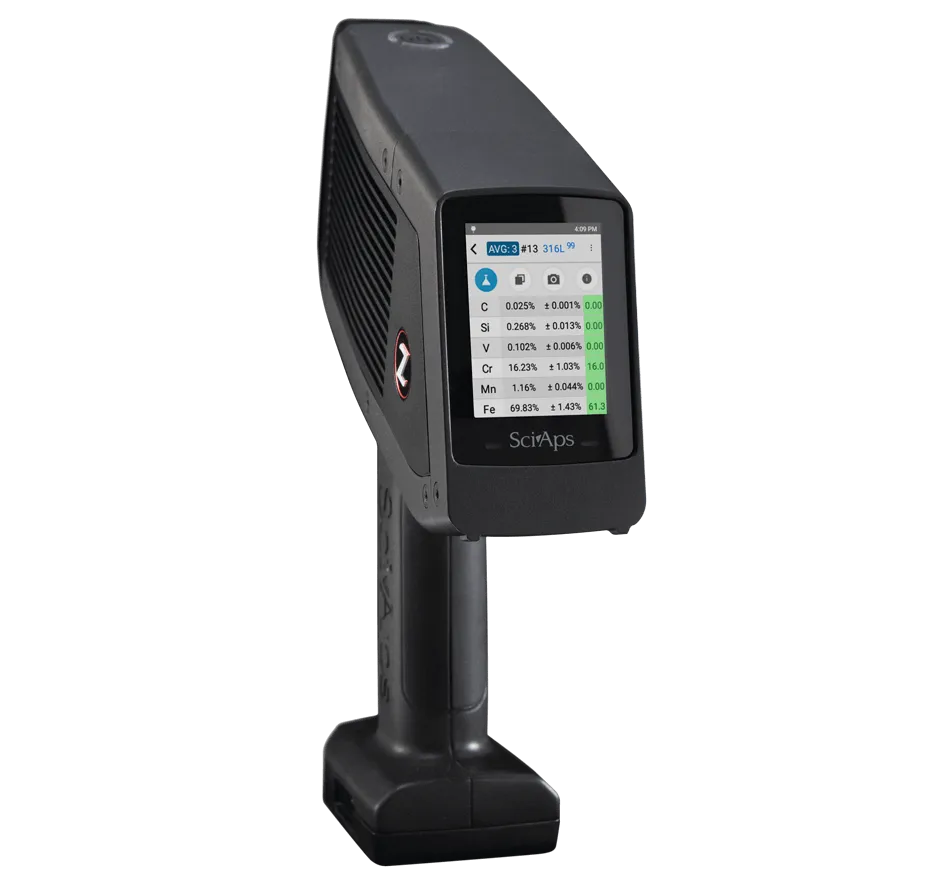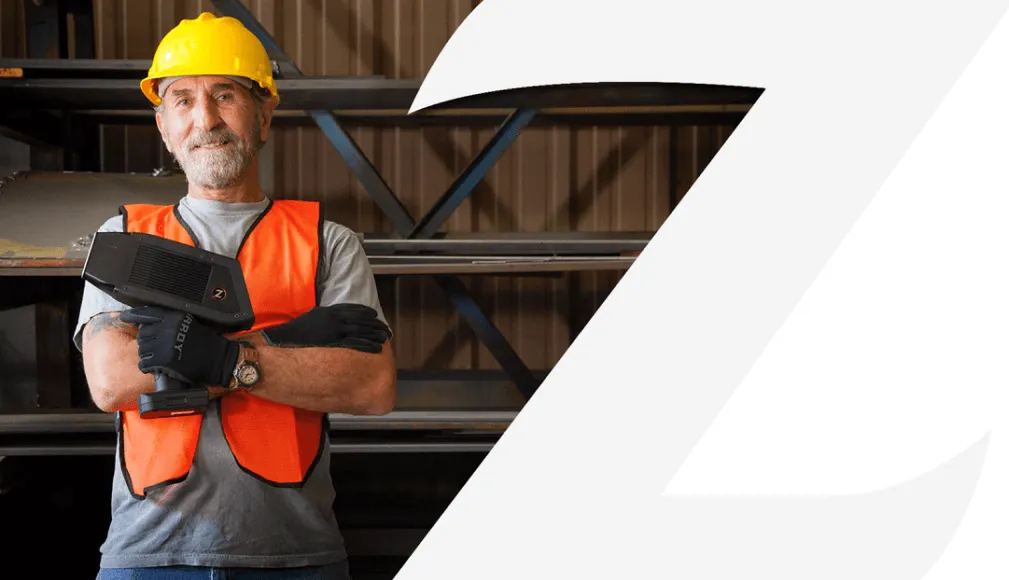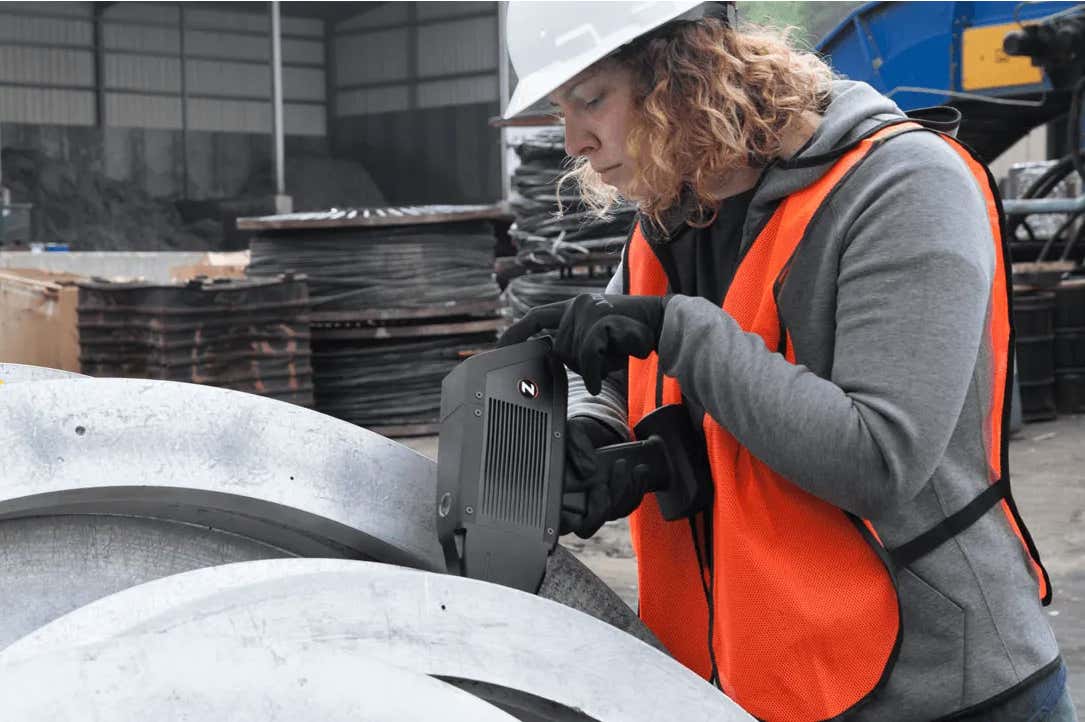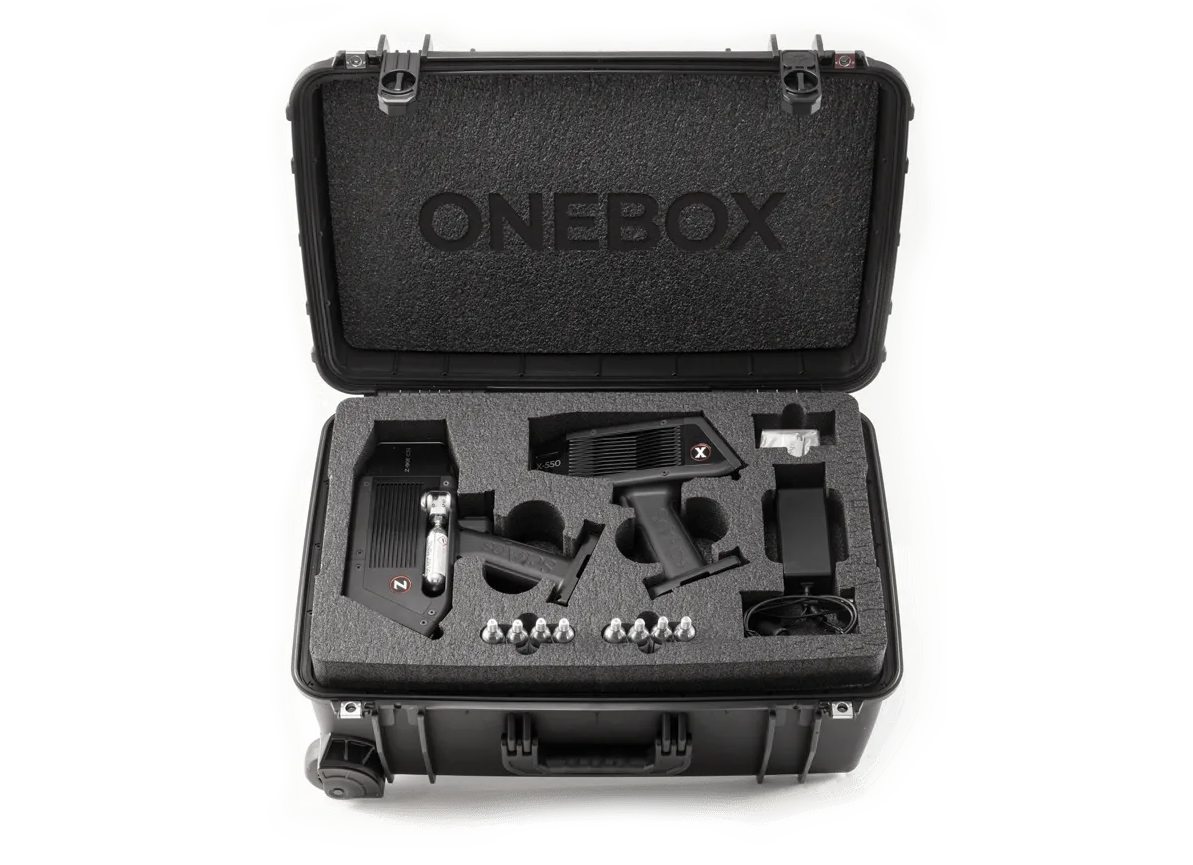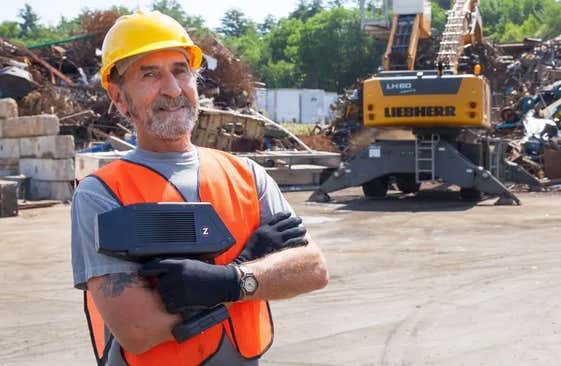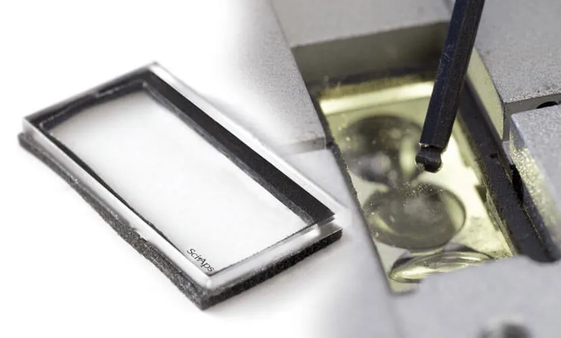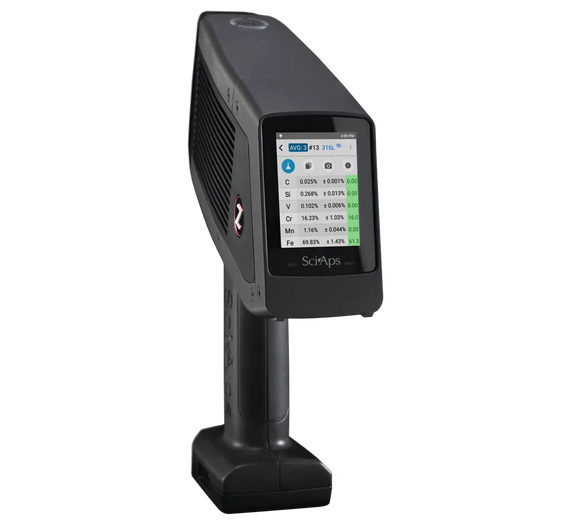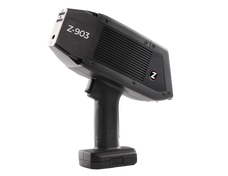A powerful combination: SciAps is a Malvern Panalytical company

Features
-
LIBS sensor: advanced spectrometer design for high resolution and wide range
-
Argon cartridge: on-board argon delivers results for pennies per test
-
Internal camera: precise targeting of analysis location
-
Macro camera: photo documentation of samples, reading barcodes and QR codes
-
Report generation: full featured, with available colud data management and reporting
-
Narrow snout: tapered for welds or difficult-to-access test locations
-
Laser safety sensor: patented sample sensor allows Class 1 operation subject to LSO approval
-
Intuitive Android operating system with app-based software
-
High resolution display: rear-facing display for easy viewing
-
Rugged metal body: maximum durability and warranty to cover drops
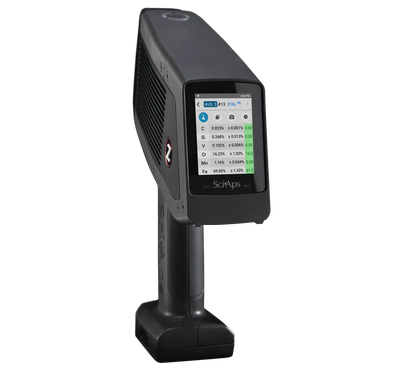
Z-Series LIBS analyzers
Explore our industry-leading handheld LIBS analyzers.
SciAps Z-Series advantages
- Argon Purge or QuickSort: The Z can use on-board argon purge for high precision analysis or QuickSort for rapid material sorting or grade identification with air-burn. Depending on the element, the LIBS signal is 2x-10x higher when operating in argon purge versus air-burn.
- Protect Confidential Materials: The Z includes desktop/tablet software allowing a user (password protected) to modify calibrations, elements analyzed, grade IDs and various spectral pre-processing. Customers can keep their proprietary materials proprietary!
- Lightest, Fastest LIBS Analyzer: The latest Z is the lightest, fastest high-performance LIBS analyzer. Perfectly balanced, you can test fatigue-free all day long. Wrist strap also included. Results shown in 1 second, full test time 3 sec.
- No Grinding, except for Carbon: The Z uses a 50 Hz laser, firing 10 surface cleaning shots in 0.2 seconds to burn away surface contaminants, dirt, etc. The Z is the only LIBS unit proven to analyze even the dirtiest scrap without grinding.
- Beam Rastering: The Z rasters the laser to 6 different positions and automatically averages the results. Why do this? Because LIBS lasers are typically 50 um in diameter, and testing a single location may not average out inhomogeneities even in vacuum melt alloys. Also, if the laser happens to hit an inclusion or embedded contaminant, an outlying result will be averaged out over the rastering. 50 years of LIBS scientific literature tell you that rastering is a “must have.”
- Customer Flexibility: Do you have specific UI or SW requests? Tell us about them. Most requests are requested by multiple customers, and we’ll always do our best to include them in a future software update.
- Free Software Upgrades: Software upgrades are free for the life of the analyzer.
- On-board Camera, WiFi, Bluetooth, and GPS: Photo-document samples, and/or aim laser at a specific area on the sample if needed. WiFi/BT makes for easy data transfer and connectivity. USB connections also included.
- Vibrant Display: Brightest, largest display, easiest to read in direct sunlight.
- Service Costs: Generally, the lowest in the industry. Why? We design our products for rough use and low lifetime service costs. SciAps makes our own lasers and spectrometers, so we can repair items on a component level.
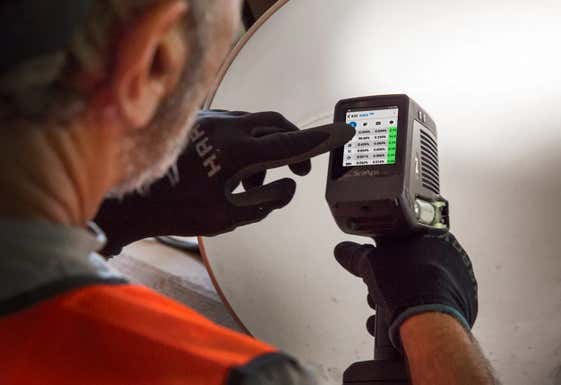
SciAps Z-Series models
-
- Z-70
-
- Designed for basic scrap sorting and metal fab shops that need an easy-to-use, point-and-shoot analyzer to identify hundreds of alloys by grade and chemistry
- Powerful laser (about 40x more powerful than the “micro-LIBS” on the market) burns through surface contamination, oil, grease, anodization, and even paint
- Uses a 6 mJ/pulse laser, which is the most powerful in the LIBS sorting market
- Spectral range: 200 – 420 nm
- Z-901 range
-
- Z-901: Features unique technology for fast material sorting and screening
- Z-901 CSi: Carbon made easy - the Z-901 CSi measures C, Si in steels, stainless and Ni alloys
- Z-901 Li: The world’s only handheld that analyzes lithium in soils and ores
- Z-902 range
-
- Z-902 Carbon: High-resolution spectrometer targets carbon in alloys, including L-grade stainless, plus other alloy bases
- Z-902 +: Features unique technology for fast material sorting and screening, with a second spectrometer extending the analytical range to 625nm
- Z-903 range
-
- Z-903 Carbon: High-resolution spectrometer targets carbon in alloys, including L-grade stainless, plus other alloy bases, with a third spectrometer extending the analytical range to 625nm
- Z-903: Widely used by geochemists, researchers, academic institutions, forensics or specific analytical applications; measures emissions of every element through transuranics
